Jean Piaget Biography, Theories and Books: The Earliest Torch Bearer of Humanism
Jean Piaget was a psychologist and philosopher whose theories challenged the
status quo of the time and created a new area of research in the field of child
development.
In this long, in-depth extensive article on Piaget, you'll
get:
- A Biography of Piaget
- Piaget's Contributions in a Historical Light: How
Piaget Breaks with the Behavorist Tradition
- More on Piaget's Theories
- The Jean Piaget Dictionary: Important Terms
Introduced by Piaget
- Piaget's Stages of Cognitive Development
- Academic Criticism of Piaget's Theories
- Popular Books by Jean Piaget
- A Film by Jean Piaget
The Biography of Jean Piaget
Jean Piaget was born in Neutchatel, Switzerland in 1896. He was the
eldest son of Arthur, a professor at the University of Neuchatel,
and Rebecca Piaget.
Piaget began showing his interest in
Natural Sciences at a very young age, publishing a paper on the
Albino Sparrow by the age of 10 or 11.
By his early 20s he
had already published several scientific papers and was becoming
recognized in the field of Zoology.
Piaget continued his
study of Natural Sciences at the University of Neutchatel, receiving
his PhD in Zoology in 1918.
After graduating, he spent some
time studying Psychoanalysis at the University of Zurich before
travelling to Paris in 1920 to work with Theodore Simon , a colleague of
Alfred Binet and
co-developer of the famous
Binet-Simon Intelligence Scale.
This scale was designed to measure the intellectual development of
young children, focusing mostly on those between the ages of 3 and
12.
Piaget's First Important Realization:
Children's Thought
Pattern Are Different from Adults
Jean Piaget was responsible
for administering this test to French children, and it was during
this time that he began to show an interest in the cognitive and
intellectual development of children. From his observations, he
recognized that the thought patterns of children are different from
those of adults.
This realization prompted Jean Piaget to continue
studying children, including his own, which eventually led to the
formation of his Stages of Cognitive Development Theory.
Jean Piaget: "I'm a Genetic Epistemologist"
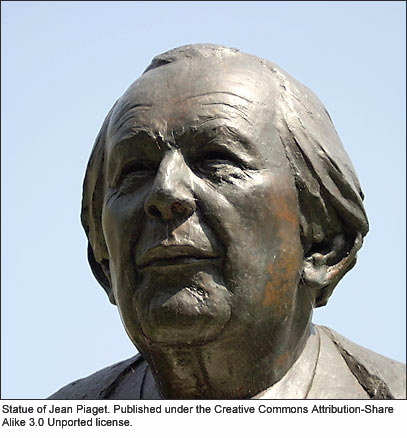 When asked, he
identified himself as a "Genetic Epistemologist". Epistemology is a
branch of Philosophy that examines the origin and nature of
knowledge.
When asked, he
identified himself as a "Genetic Epistemologist". Epistemology is a
branch of Philosophy that examines the origin and nature of
knowledge.
It works to answer such questions as:
- What
is knowledge?
- How is it acquired?
- What are the limits of human
knowledge?
- What are the varying degrees or types of knowledge?
Piaget's Unique Theory: Combining Personal Experiences with Biological Development
Jean
Piaget's interpretation of "genetics"
is more accurately described as "biological processes". In other
words, he believed that knowledge is a direct result of the
interaction between a person's experiences and their stages of
biological development.
For example, an infant's biological
processes (or stage of development) does not allow him to understand
that an object continues to exist even if he cannot see it.
However, a toddler has matured enough - or developed the
necessary processes or "schemas" - to now know that when a toy is
put in a cupboard it still continues to exist and can be retrieved
when desired.
So, Piaget was not only interested in the
nature or origin of thought, but he also wanted to understand how it
develops and what role biological processes played in this
development.
He proposed that all humans must pass through a
series of biological stages - one building upon the other. His use
of the word "genetics" is not referring to the specific DNA of
individuals, but of the nature of human beings in general and the
connection between biology and socialization.
Jean Piaget was
a very prominent and respected figure in the field of psychology and
held many positions throughout his career including:
- Professor of Psychology, Sociology, and History of Science
- Director of the International Bureau of Education
- Director of the Institute of Educational Sciences at the University of Geneva
- Founder of the International Center for Genetic Epistemology in Geneva in 1955.
Here is a Jean Piaget biography in a video
version for those of you who like to see things explained through
images:
With the Torch of Humanism Piaget Breaks with Behaviorism
Jean
Piaget's work with
children in the 1920s led him to believe that the popular ideas held
by experts were incorrect.
Up to this point, behaviorist
theories were widely accepted and people such as
John B. Watson claimed that children could be "programmed" to behave a
particular way through rewards and punishments.
Parents
could ensure desired behavior by controlling their children.
Simply put, Behaviorists believed that children were blank slates
and parents could create the person they wanted by rewarding "good"
behavior and punishing "bad" behavior.
The Processes of Schemes or Schemas
But, as Jean Piaget began to observe children,
he noticed some things that made him question this idea.
He
began to realize that children are responsible for building their
own knowledge - or thought processes that he called Schemes or
Schemas.
Basically, he stated that a child's development is
based on interaction with his environment.
The child then
takes the information he has learned from these experiences and uses
it to build segments or schemas of thought that will determine how
he sees the world and how he interprets future interactions or
experiences.
Therefore, the information that a child
receives from his parents will influence his thought processes and
behavior, BUT a parent cannot control how a child will use this
information to build these processes.
As a parent, I can
give my children information, but it is their job to use that
information to build their personality.
The Shocking News of
the Time:
Children Play a Part in Their Own Development
 In
other words, Jean Piaget recognized that children play a part in their
own development. This was a shocking idea.
In
other words, Jean Piaget recognized that children play a part in their
own development. This was a shocking idea.
Remember, for
decades parents had been told that a child's wants, needs, or
desires were irrelevant - if a parent programmed a child with the
correct information, everything would go as planned.
But,
this didn't always work. Despite the most
authoritarian parenting, some children did not become the perfectly well-behaved
people that Behaviorists intended.
John Watson and his
colleagues believed that a child was a mini-adult and should behave
as such.
Inappropriate behavior was a result of "bad"
parenting - or lack of parental control.
But, then along
came Piaget with a revolutionary observation: children actually have
a mind of their own.
You can imagine what this did to the
field of parenting.
Piaget Adds Fuel to the Fire by Claiming that Children Don't Think as Adults!
And, since Jean Piaget had
experts in an uproar, he added fuel to the fire by claiming that
maturity played a part in cognitive and mental development.
Some children were just not capable of certain thought processes
because they hadn't yet reached a high enough level of development
or maturity.
Wow!
This idea completely shattered the
popularly held beliefs of the time.
Children are not mini
adults - the way they think, the way they process their experiences,
and the complexity of their cognitive processes are very different
from adults.
Piaget simply said that you can't treat a child
like an adult because his is not an adult. He is a child, and by
understanding the age related stages of development, parents can
help children build the skills, abilities, and thought process
needed to become a healthy adult.
Parents Provide the Tools but the Child Is the Builder
The keyword here is "HELP" not
"CONTROL".
Jean Piaget was a constructivist.
He believed
that personality is "built" and a parent can give a child the tools
he needs to construct his own unique personality; however, it is the
child's job to do the actual building. And, the complexity will
increase as the child matures.
The problem with the
behaviorist theory is that it did not teach parents to give their
children what they needed to achieve their full potential - or
Maslow's "self-actualization".
This was why many
parents were noticing that their children "obeyed" when there was a
fear of punishment or the hope of a reward, but when parental
control or the rewards and punishments were removed, the desired
behavior did not always remain.
In other words, a child
behaved because of external controls, not because he had built an
internal "schema" or understanding.
The child is behaving
the way the parents want - not the way he wants.
The
Groundbreaking Implication of Piaget's Ideas:
Treating Children Like
Human Beings in Their Own Right
Jean
Piaget's idea that society
(parents, caregivers, educational system) should create "men and
women who are capable of doing things, not simply repeating what
other generations have done" implied that children should be treated
as human beings rather than robots and that they should be allowed
to think for themselves.
This was mind boggling to those who
thought "children should be seen and not heard"; but, Piaget
believed that if children were not involved in the process of
development - if they did not pass through the levels of
development, building on the information learned at each stage -
then they would not become healthy, self-sufficient adults.
Jean
Piaget also addressed the "nature versus nurture" debate by stating
that development is not either one or the other, but a combination
of both.
Genetic predispositions (the idea that all humans
are "wired" to move through a series of invariable stages) work
together with environmental and social factors to determine
cognitive and intellectual development.
Although many critics
rose up against Piaget's theories, his ideas called into question
the Behaviorist parenting model and marked the beginning of a more
humanistic approach.
More on Piaget's Theories and Contributions
Jean Piaget is one of the most well-known
experts in the field of parenting and child development.
His
theories and observations were a diversion from the behaviorist
beliefs that had dominated for so long and inspired a new interest
in the cognitive and intellectual development of children.
Some of Piaget's most important contributions include:
- Differences between children and adults
- Nature AND Nurture
- Developmental Processes - Coining New Terms
- Stages of Cognitive Development
The Difference Between Children and Adults
 Jean Piaget made
some interesting observations while administering and marking the
Binet-Simon Intelligence Test.
Jean Piaget made
some interesting observations while administering and marking the
Binet-Simon Intelligence Test.
When working with younger
children, he noticed that they consistently gave wrong answers to
questions that older children or adults answered correctly.
This led Jean Piaget to believe that young children's cognitive processes
and thinking patterns were different from those of adults.
Remember that earlier researchers and psychologists viewed children
as mini-adults, so Piaget's idea that childhood is a separate stage
of development and should be recognized as a unique period of a
person's life was quite remarkable.
But, it could not be
denied that children answered questions differently depending on
their age.
Jean Piaget was so fascinated by these observations
that he became very interested in understanding how children acquire
knowledge - and how this knowledge grows or builds throughout
childhood.
Piaget also noticed that children's ability to
understand their environment seemed to be connected to their level
of maturity. Basically, they didn't act like adults because they
weren't adults. They weren't capable of thinking like adults so,
therefore, they were unable to behave like adults.
Simply,
Piaget's theory stated that there is a difference between children
and adults. So, children should not be treated as adults until they
have acquired all the knowledge they need - through their
experiences and interactions with their environments - to be able to
handle such expectations.
While this idea seems basic, it
was completely different from other theories and really opened up a
whole new area of research in child development.
Nature and Nurture
Forget the "Nature versus Nurture" debate - Piaget
said there is no need to argue because both sides win.
He
took a more holistic or all-encompassing view that nature works
together with nurture when it comes to
child development.
He believed that to answer the questions about knowledge - where
it comes from, how it is acquired, and how it grows - you have to
look at both environmental and genetic factors.
Cognitive
and intellectual growth depends on biological growth, and the reason
children cannot understand certain things at particular ages is
because there are genetic constraints preventing learning.
In other words, there are some things that children cannot do until
they have the physiological or psychological maturity to do so.
How Schemas Are Made
Jean
Piaget proposed that children
"construct" knowledge and understanding by using information that
they have acquired when experiencing or interacting with their
environment.
He called these "constructs" or categories of
thought "schemas".
He suggested that children pass through a
series of stages in the exact same order, and moving from one stage
to the next depends on maturity and biological or psychological
development.
At each stage, new schemas are formed - or
original ones are increased.
In order to build more complex
schemas, children must interact with their environment.
So,
children's experiences work together with physical and intellectual
development to build knowledge and understanding.
Based on
this conclusion, Piaget suggested that nature and nurture are
unquestionably linked.
You Cannot Force Children through the Stages Until They Are Ready
Jean Piaget also observed that a parent or caregiver can
challenge a child to develop his capabilities but they cannot
push him from one stage into another.
In other words,
no matter how many flashcards you put before your toddler,
they will not learn to read until they are mature enough (or
intellectually capable) of doing so.
Basically, if a
child is not ready to learn to read, they will not be able to
learn. If a five year old is struggling with addition facts,
it is not because he is "stupid ".
He may just not be ready (or capable) or learning such
material. Try again in a few months and he may catch on easily.
The idea that cognitive abilities may be connected to biological
development was revolutionary and has had a great impact on
the education system worldwide.
The Jean Piaget Dictionary
Important Terms Introduced by Piaget

ADAPTIONS
This
simply means that a person will adapt to their world or environment
based on the information they receive.
According to Piaget,
there are two ways of adapting -
assimilation or accommodation:
- Assimilation is always the first choice because it requires very
little change.
A person takes information from their interactions or experiences and fits it into an existing knowledge base.
This could even mean changing the information a little bit - or manipulating it to fit into existing ideas. - Accommodation involves actually changing or replacing existing
segments of understanding based on new information.
For example, if a young child identifies a bird by the fact that it can fly, then in his mind, everything that flies is a bird.
So, when he sees an airplane or a kite for the first time, he may call it a "bird ".
Even though there are features of both an
airplane and a kite that prove they are not birds (ie. A plane
doesn't flap its wings, a kite is attached to a string) the child
will manipulate what he is seeing and experiencing to make it fit
into an existing knowledge base.
However, an older child is
mature enough to recognize these discrepancies and will construct a
new area of thought to accommodate this information.
Similarly, assimilation can have various degrees of complexity.
For example, a child may visit a zoo where he sees ostriches. If
the only birds he has ever seen are robins and sparrows, an ostrich
will not initially fit into his knowledge base.
After all,
ostriches are large and do not fly. But, rather than constructing a
new area of thought - or using accommodation - he will make his
existing schema more complex so that "birds" now include
"ostriches".
CLASSIFICATION
This simply refers to a
child's ability to group objects together based on similar features.
It is very basic and usually neglects to recognize
"differences". For example, if a ball is round then everything that
is round is a ball. Or, like the earlier example, if a bird flies
then everything that flies must be a bird.
CLASS INCLUSION
This is more advanced than classification and, according to
Piaget, does not usually appear before the age of seven.
Basically, this is a person's ability to recognize sub-sets within
larger sets.
For example, there is a class of objects called
"cars", but there is also a class of objects called "vehicles or
transportation".
Therefore, "cars" is a sub-set of "vehicles
or transportation".
Not all "vehicles" are "cars" (because
there are also trains, trucks, boats, buses, etc.), but all "cars"
are "vehicles".
Or, not all "animals" are "cat" but all
"cats " are "animals".
CONSERVATIONS
According to
Piaget, this appears between the ages of 7-12 and involves a child's
ability to recognize that objects stay the same even though they
look different.
Or, in more complex terms, realizing that
the properties don't change just because the shape or color changes.
For example, a lump of clay is still clay even when it is formed
into a sculpture.
If one young child is given a larger
cookie and the other is given two smaller cookies, they will
automatically perceive that the child who received the two cookies
was given "more".
Young children are not capable of
understanding that the mass of one larger cookie is exactly the same
as two smaller cookies.
All they notice is that one child
received only one cookie while the other was given two.
This
is why you can "fool" a young child into thinking they have more
simply by breaking a cookie in half. They do not understand that one
cookie does not become two just because it has been broken.
It still equals one cookie.
DECENTRATION
This is the
ability to look at multiple features of an object rather than
focusing on just one.
Now children will know that two
cookies do not necessarily mean "more", but you must consider both
the "size" as well as the number.
Decentration also involves
the ability to multi-task or be able to pick up an activity where it
was left.
For example, if a child is working on a task and
you ask him a question, he is able to stop, answer your question,
and then return to what he was doing without becoming lost or
unfocused.
Decentration is also important in being able to
understand the meaning behind symbols. A young child will memorize
math facts, but an older child will know "why" 5 minus 2 equals 3.
His mind is able to look at multiple aspects and understand
the operations.
Young children will recognize only the
numbers, but older children will be able to notice both numbers and
symbols and also understand what they mean.
EGOCENTRISM
Young children often believe that they are the center of the
universe and the world revolves around them.
According to
Jean Piaget, this is not selfishness.
He observed that until
children reached a certain level of physiological development, they
were unable to see things from another person's perspective. They
aren't being selfish because they simply do not understand that more
than one point of view exists.
It is not that they have to
be "right" - they just do not comprehend why someone is not seeing
things the same way they do since that is the only "reality" that
exists.
As a child becomes older, they acquire the ability
to see things from another's point of view and they learn how to
adapt their thinking patterns - or schemas - accordingly.
This is when a child will begin to develop compassion or empathy and
will be able to find more complex solutions to problems.
OPERATION
Piaget used the word "operation" to refer to a
child's ability to work things out in his mind.
Young
children need a very "hands on" approach to learning. Everything is
based on the five senses.
For example, a toddler will not
understand what the number "three" means.
However, if you
hold up three fingers or count out three crayons, they will be able
to associate the word with a particular quantity.
Older
children and adults can process a lot more in their heads because
they have the ability to think abstractly and do not need concrete
evidence.
SCHEMA
Schemas are representations in the
mind that are built using information obtained by interacting with
the environment.
Piaget was a constructivist, so he believed
that knowledge is "built".
Think of all the information as
building blocks that are used to construct a schema or area of
thought.
These areas of thought make up an individual's
perceptions, ideas, actions, and understandings.
The more
schemas a person has - and the more complex these schemas are - the
more developed his cognitive and intellectual abilities will be.
A child with very small, simple schemas will think very
concretely - black and white, matter-of-fact, egocentric.
An
older child who has multiple and more complex schemas will be able
to see things from various perspectives and can think abstractly.
STAGE
Piaget believed that everyone passes through a
series of stages. These stages must be experienced in order and no
stage can be skipped.
This is where the "genetic" aspect of
his theory comes in to play.
As mentioned earlier, Jean
Piaget did not discuss the individual DNA of each child. His
reference to genetics was more a general term for the biological
process that every human being must experience in order to develop
properly.
To explain simply:
- It is expected that
every person will learn how to walk.
- If they do not learn
how to walk, there is an indication that something may be wrong.
- The cause of this inability can vary, but the process of normal
development includes walking.
- Similarly, a child cannot run
before he walks. In the natural development of motor skills, walking
comes before running.
In In Piaget's theory of development, he suggests that certain levels of development must be experienced. It is a natural progression, just like learning to walk.
If a
stage is not fulfilled properly then future actions can be affected.
Just like a person who cannot walk will never be able to
run, a child who does not develop the ability to classify objects
will not be able to use class inclusion.
According to
Piaget, one milestone is built upon the foundation of previous
abilities - or more complex thought is built upon the foundations of
an existing thought base - so one stage of development must be
passed through before another can be entered.
Piaget's Stages of Cognitive Development
Jean
Piaget proposed that
development is a series of progressive stages.
The
transition from one stage to the next is not always smooth (may be
experienced in spurts or sudden changes) and the exact age at which
each child moves through the stages can vary.
For example, a
child generally enters the third stage by age 7; however, some
children may be ready for this transition at age six while others
may be 8.
SENSORIMOTOR: Birth - 2 Years
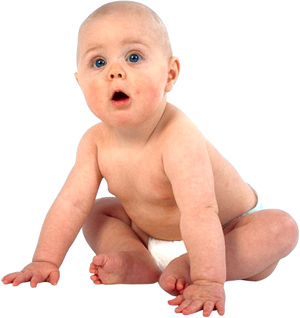 At
this stage, children do not have a lot of mental representations
(schemas) for objects or experiences so intelligence is built
largely through motor interaction with their environment.
At
this stage, children do not have a lot of mental representations
(schemas) for objects or experiences so intelligence is built
largely through motor interaction with their environment.
They will touch everything, put objects in their mouths, crawl,
climb, roll, and explore.
They will begin to understand that
they play a role in their environment and can act intentionally. For
example, a baby will learn that he can shake a rattle to make a
noise or hit a button to start a musical toy.
Object
permanence is a main accomplishment of this stage and is a
necessary foundation for future stages.
PRE-OPERATIONAL: 2-7 Years
 During this stage a child will learn to use language to
express his needs and wants, although he is still egocentric and has
difficulty understanding the viewpoints of others.
During this stage a child will learn to use language to
express his needs and wants, although he is still egocentric and has
difficulty understanding the viewpoints of others.
The
pre-operational child will classify objects by a single common
feature based on his schemas.
For example, a child may pile
all blue objects together regardless of their differences.
A
blue ball, a blue crayon, and a blue toy car all belong together
because they are blue.
Or, all square blocks belong
together, even if they are different colors.
Since the
pre-operational child has some mental representations, he is able to
understand when you talk to him about a "bus" even though there is
no bus in sight.
He is also able to think symbolically and
use objects to represent his thinking. For example, a pencil can
become a magic wand or a tricycle can become a horse.
CONCRETE-OPERATIONAL: 7-11 Years
Children can demonstrate
some level of conservation, depending on age, and will show
increasing ability to classify objects based on various factors.
Class inclusion and conservation allows the concrete-operational
child to use logic and reason.
He is also able to see
different points of view and can use his deductive skills to adapt
to alternate perspectives.
FORMAL OPERATIONAL: 11+
This is the stage of development that carries a child into
adulthood. At this point, children are able to think both logically
and abstractly.
They can now think about the future,
consider hypothetical situations and consequences, and solve complex
problems that impact both themselves, others, and the world as a
whole.
Criticism of Piaget's Theories
While Piaget's theories were very
influential in changing the popular parenting views of the time, he
did come under a great deal of criticism.
1. Critical Point:
Piaget's Case Studies Were not Representative of the 'Normal' Child
Many researchers, both then and now, argue that Piaget's
experiments and studies were not very scientific.
They feel
that he used too small of a sample and focused only on affluent,
well-educated children.
Because he did not consider the
language, cultural differences, education level, and personal
experiences of his subjects, many believe that his conclusions are
not universal - or cannot be generalized to ALL children.
While Piaget's studies do support his observations, some experts
believe that he did not structure his experiments in such a way to
exclude alternate explanations.
In other words, there could
be other reasons for what Piaget found.
2. Critical Point:
Piaget's Stages of Development Were a Cultural Occurrence and Are
not Universally Valid
Researchers also argue that Western
parents all tend to place specific demands on their children at the
same age so it may only appear as if there are stages of development
when in fact it is simply a cultural occurrence.
Would the
observation of children in other cultures lead to a different
division of the stages - or even an addition or elimination of
stages?
3. Critical Point:
Piaget's Stages and the
Movement Between Them Were too Rigid
Perhaps the greatest
criticism of Piaget's theories is with the rigidity of the stages.
There is a lot of research to support the idea that Piaget's stages
may not be as clear-cut and concise as he indicated.
Some
studies have even shown that he may have underestimated the ability
of children to understand "beyond their years".
Some
children can manage concrete operations well before the age of 7 and
some people never attain the ability to think abstractly, even as
adults.
4. Critical Point:
Object Permanence May Occur
Earlier than Piaget Suggests
Baillargeon and DeVos (1991)
conducted a study to test Piaget's theory that object permanence is
not achieved until the end of the Sensorimotor stage - or about two
years of age.
Their findings indicated that infants as young
as three and half months had some understanding of this concept.
It was also discovered that some children displayed object
permanence when an adult was not present, leading to the idea that
perhaps a parent, caregiver, or researcher may be a distraction,
particularly to younger children/infants.
5. Critical Point:
Children May Show Empathy Earlier than Piaget Suggests
Other
research has also shown that 4 - 5 year old children have the
ability to consider more than one perspective and are able to see
things from other people's points of view.
In fact, some
experts argue that Piaget was giving too many options which would
overwhelm the children. When the number of perspectives were limited
to two, young children could process and understand these
viewpoints.
In other words, young children are not quite as
egocentric as Piaget thought.
6. Critical Point:
Piaget
Gave too Many Verbal Cues in his Experiments
Researchers Rose
and Bland (1974) believed that many of Piaget's conclusions were
manipulated because he gave too many verbal cues that would
influence the outcomes of his experiments.
7. Critical Point:
Children Can Be in Several Stages at Once
So, Piaget's
cognitive stages of development may not be as distinct as once
thought.
In fact, some children can actually be in more than
one stage at a time.
Piaget suggested that the stages
themselves acted as building blocks to cognitive thought and one
stage could not be entered until the previous one was completed.
However, recent research has challenged this idea.
While
experts do believe that concepts must be constructed with one level
of understanding being built upon the foundation of another, they
point out that it is possible for a child to be in the concrete
operational stage while still being egocentric.
Likewise, a
child in the pre-operational stage may have achieved class-inclusion
(a concrete operational function) but will not have the ability to
see multiple points of view.
Piaget's theories changed the
way parents viewed their children and set the foundation for much of
today's educational principles.
However, more recent
research has shown that, although much of what he proposed was
correct, many of his ideas need to be given more flexibility.
Children do seem to develop in stages, but his "universal"
approach does not allow for individuality and often places more
emphasis on biological or "genetic" factors rather than
environmental influences.
Popular Books by Jean Piaget
Piaget published several books that outline his theory and focus
on his belief that cognitive development is linked to biological
development.
Works such as:
- Adaption and Intelligence
- Origins of Intelligence in the Child
- The Psychology of Intelligence, and Genetic Epistemology
... all cover Piaget's
basic theIf you want a deeper
understanding of Piaget's theories and the impact he had on the
field of child development, perhaps the best book to read is The
Psychology of the Child (1972).
The Psychology of the Child
is a summary of years of study and observation and puts all of
Piaget's findings together in one manual.
While it is not as
detailed as reading all his previous books individually, it does
trace each stage of cognitive development and discusses fundamental
concepts such as the construction of reality, development of
perception, the use of symbolism, language, and formal thought.
For an overview of the stages of cognitive development and a
fairly detailed summary of Piaget's work, this is the book to read.
And, Piaget endeavored to present this information in a way
that is easy to understand so you won't need a degree in psychology!
A Film by Jean Piaget
In this film by made Jean Piaget
he, among other things, tries to explain his position as a genetic
epistemologist and thereby tries to counter some of the critical
points academics have made in relation to his theories.
In Summary
While Jean Piaget has been criticized, he has also been recognized
as one of the most influential experts in the field of child
development.
His theories laid the foundation for much
future study and brought a more humanistic approach to parenting.
He published several books and articles, and his findings
are among the most cited in history.
His contributions to
psychology have been immeasurable, with the most prominent being his
stages of cognitive development.
Basically, Piaget's theory
states that:
- Children think differently than adults
- Intelligence is based on maturity and cognitive growth - Nature AND
Nurture both play important roles in child development
- As a
child grows and becomes more mature (or develops more schemas), he
becomes less egocentric and is able to see things from other points
of view.
- With cognitive growth comes the ability to perceive
the world differently which leads to a greater willingness to create
new schemas - or to accommodate rather than simply assimilate new
information into existing schemas.
- The final stage of cognitive development is formal thought, or the ability to think abstractly. This is achieved when a person is able to construct new schemas without physical evidence, or is able to think beyond their "reality ".
Your Positive Parenting Ally,
Birgitte

Want to stay in touch and get the latest news?
Sign up
for my free newsletter
Parent Coaching
- For Inner Peace, Clarity and a Deeper Connection to Your Child
 Being a parent can feel like a double-edged sword. Life with kids may feel like the greatest gift you have ever received, while at the same being hugely challenging, often leaving you confused, stressed and overwhelmed.
Being a parent can feel like a double-edged sword. Life with kids may feel like the greatest gift you have ever received, while at the same being hugely challenging, often leaving you confused, stressed and overwhelmed.
When we feel like this, we've lost touch with ourselves. We can't hear our own inner voice, and it's difficult to know what is 'right' for us and how to act.
I offer in-depth parent coaching to help you regain your balance and get back in touch with yourself. From a place of inner peace and clarity, your will find your own answers which will help you reconnect with your child from a place of unconditional love and acceptance.
Read more about my parent coaching here.
Where Would You Like to Go Next?
Famous Parenting Experts Overview
 Famous Parenting Experts and Their Parenting Styles Theories: Humanism vs. Behaviorism. |
Parenting Experts Related to HUMANISTIC Parenting Styles (Founders, Refiners, Supporters or 'Coiners')
 Sigmund Freud the Controversial Pioneer of Psychology: The Famous Psychosexual Stages of Child Development. |
 Diana Baumrind Spot-on: Biography, 3 Parenting Styles and Criticism (Spanking). |
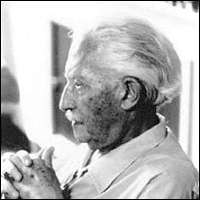 Erik Erikson Biography and Theories: The 8 Developmental Stages, Identity Crisis and Ego Identity. |
 Abraham Maslow Biography: The Father of Humanistic Psychology and Self Actualization Theory. |
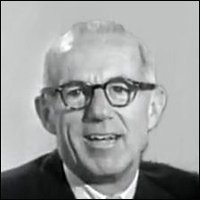 Dr. Benjamin Spock Biography, Theories and Books: The Controversial Forefather of Intuitive Parenting. |
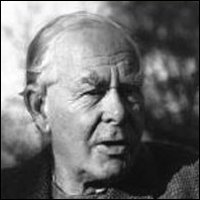 A Biography of John Bowlby: The Father of Attachment Theory. |
 An Intriguing Mary Ainsworth Biography: The Refiner of Attachment Theory. |
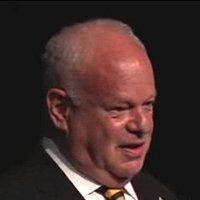 Martin Seligman: The Critic of Traditional Psychology and Father of Positive Psychology. |
 Carl Rogers Biography, Theories and Books: The Founder of Humanistic Psychology. |
 Alfie Kohn Biography, Theories and Books: The Father of Unconditional Parenting. |
 Deep Insights into the Essence of Dr Sears' Attachment Parenting - Along with a Fascinating Historical View on the Slow Rising Consciousness of Attachment Parenting. |
Parenting Experts Related to BEHAVIORIST Parenting Styles (Founders, Refiners, Supporters or 'Coiners')
 John B Watson Biography, Theories and Books: The Father of Behaviorism. |
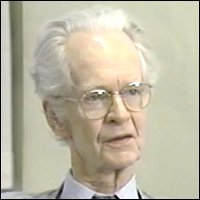 B. F. Skinner Biography, Theories and Books: Father of Radical Behavorism. |
 Amy Chua Biography and Theories: Tiger Mother's 9 Parenting Principles. |
Back to the top of this page about Jean Piaget Biography, Theories and Books: The Earliest Torch Bearer of Humanism
Go to the Positive Parenting Ally Homepage







